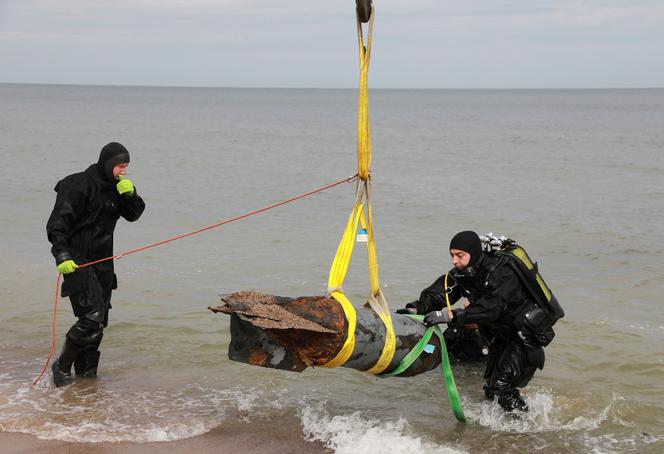


A further source of pollution in the Baltic Sea is rotting at the bottom of its waters, subject to corrosion: 40,000 metric tons of chemical weapons, including 15,000 metric tons of toxic agents (mainly mustard gas); half a million metric tons of conventional weapons (sea mines, bombs, grenades, etc.); and hundreds of wrecks dating from the Second World War. Following the defeat of Germany, which until 1945 possessed East Prussia, now the enclave of Kaliningrad (ceded to the USSR), as well as part of Poland's Baltic coastline, the Allies conference in Potsdam divided up the weapons recovered from the vanquished in order to neutralize them.
The Soviet Union inherited part of the Third Reich's ammunition arsenal, which it eventually disposed of in the Baltic Sea. "For reasons of practicality, the Soviets eventually dumped them overboard in the Gotland and Bornholm basins, even though the latter is no more than 100 meters deep," pointed out Jacek Beldowski, a researcher at the Institute of Oceanology Polish Academy of Sciences and a specialist in chemical weapons buried in the Baltic. Loads in wooden crates were also scattered here and there en route, and may have drifted.
The exact locations and quantities were kept secret during the Cold War, a period not conducive to East-West cooperation. It wasn't until the 1990s that the general public and politicians took up the issue, as fishermen continued to find bombs in their nets or on the beach. Financed in particular by the European Union, projects were launched to better assess the risks and begin to consider salvage operations.
In 2009, an investigation by Swedish public television also claimed that the former Red Army had disposed of its own stocks of chemical weapons, stored in the Baltic states at the time of independence, by dumping them in Swedish territorial waters.
"We've already found sediment contamination 900 meters and more around the Bornholm pit, from munitions containing mustard gas or arsenic, so there's definitely a spread. Fish also showed parasites and malformations more frequently than elsewhere," said Beldowski, who added reassuringly: "There is no danger to humans, even if these agents may have entered the food chain in limited places."
The corrosion of stocks, in various states and at different depths, remains difficult to predict and raises a major unknown. "In the worst-case scenario, we could have a massive spill of harmful substances, causing contamination that will affect marine life and could put an end to commercial fishing," argued the scientist.
You have 14.22% of this article left to read. The rest is for subscribers only.
